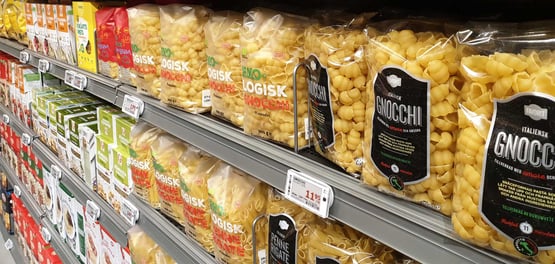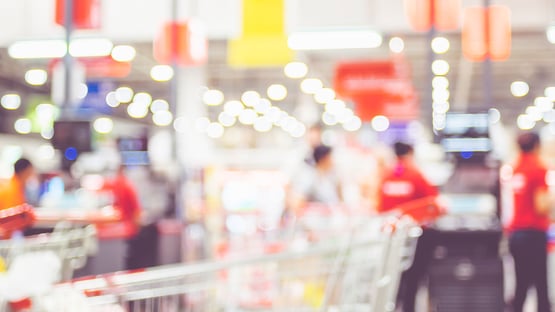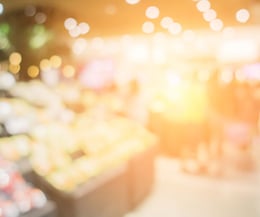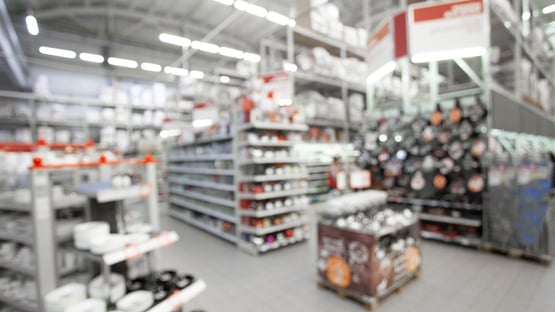Shoppers demand to know more and more about the products they buy, so how can retailers build this new-found need for knowledge into the buying journey, asks Duncan Potter, CMO at Pricer?
It’s an open debate as to whether grocers have responded quickly and deeply enough to demands from their customers for more detail on the products they are buying. It all depends on which media you read and how you feel about just how much responsibility retailers should carry, given that both suppliers and consumers are also involved.
Either way, retailers inevitably carry the weight because they are permanently in the public eye. And to be fair they work almost continuously to make improvements and embrace an unending flow of consumer and consumer group special interests that make both compliance and positive perception maintenance a minefield.
The words are familiar, and the lexicon gets longer by the day – vegetarian, vegan, gluten-free, prepared in an environment where nuts are present. Ethically sourced – and while responsibility for much of this basic product labelling lies with the manufacturer, it is the retailer that has to demonstrate clarity and commitment at the shelf edge.
And more. Supermarkets occupy a unique place in the hearts and minds of the consumer, never more so since the pandemic during which extreme sensitivity to food and health has placed an even bigger burden on them to not only help their customers but be seen visibly to do so.
As a result, the supermarket shelf is no longer just a steel rack system to hold products but a message board, a recipe book, a health and diet clinic, a lifestyle magazine and a cultural mirror. This multiplicity of roles has highlighted the limitations of traditional pricing and labelling, which were developed from a purely functional, logistical point of view with their main focus on efficiency, throughput and profit.
The shelf is also both the beginning and the end of the customer journey that may well have started with supplier advertising, progressed through the media and Internet to the final choice at the point of sale. Or it may be the start of the journey, as consumers look for novelty to fill the weekly meal calendar that has turned into the same old same old during the pandemic. With a thirst for the new, the consumer is willing the retailer to surprise and delight them but is not expecting to have to work too hard to locate the perfect choice.
The product and its packaging, pricing and labelling, and its presentation and placement therefore have a big job on its hands. More recent developments in product labelling have often come as add-ons rather than being integrated with existing systems, with the risk of simply confusing the customer or making them work too hard to find what they were looking for. Or they have been added without consultation with the wider supply chain, operations or store management stakeholders.
This is often a challenge too for another type of customer – the store associate tasked with filling and replenishing shelves but increasingly acting as an in loco customer, responsible for picking for online orders. As the volume of online orders surges, retailers are searching for productivity improvements in an area of their business that continues to generate little or no profit.
Figures based on store observations made by Pricer and results communicated by a leading brand of food store show that time saved on every item picked is 5-10 seconds. At 100 orders, 30 items per order, 20 EUR hourly cost, 7 days/week, 7-second pick save equates to => 42 500 EUR annual saving. The label in this scenario also contains flash technology that alerts the picker to the correct product using light.
In terms of staff restocking shelves, labels can switch to inventory mode, to display information such as theoretical stock, replenishment day, average sales or products’ EAN barcode.
Figures from the same study show that the time saved by not having to print and replace price tags, based on 500 changes per week, 2 minutes to change price tag (including printing sorting and finding the right product), at 20 EUR hourly cost equates to => 17 000 EUR per annum saved. Flash technology is used in this scenario again to show staff where a product should go on the shelf, which in complex assortments represent a saving of up to 38 seconds per item.
The need for a more joined-up approach is therefore about cost savings as well as enabling a better customer experience. In the vanguard of solutions is the electronic shelf label (ESL), available for many years and widely adopted in mainland Europe, but now at a tipping point in the UK. Operating on a network, shelf edge labels can display a wide variety of information and strategic content such as price and promotion can be changed instantly and accurately across any number of thousands of SKUs. This can include a bar code as well as a QR code on a single label, making it easy for customers to access detailed information as required.
The number of colours and colour combinations are now good enough to satisfy the needs of any category manager. The battery life of the labels has now reached the point where it is no longer a deal-breaker because their power draw is now so low. Installation is simple because it does not interfere with the layout of the store; optical wireless technology based in the near-infrared spectrum means that the labels do not need line of sight in order to operate, are practically interference-free (unlike radio-based solutions) and require a fraction of the battery power to communicate.
The results speak for themselves. Retail giant, Carrefour announced recently that it intends to deploy Pricer in approximately 500 stores before the end of 2022, using the real-time, reliable and easy-to-use ESL system as the platform for Carrefour to continue to enhance both store efficiency and customer experience.
This article was published in FMCG Magazine on 29 March 2021, The information revolution at the shelf edge - FMCG Magazine



